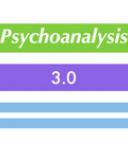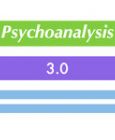
Psychiatry
Psychiatric Diagnoses Can Change History
Cultural consequences of removing homosexuality from DSM-II
Posted February 27, 2011
By Jack Drescher, MD
The American Psychiatric Association (APA) is currently revising its Diagnostic and Statistical Manual (DSM) with the DSM-5 having an anticipated publication date of 2013. As the first major DSM revision in the Internet age, the process has generated much interest among professionals as well as the general public. There has been extensive and unprecedented media coverage of the DSM-5's innumerable controversies, which include relations between organized psychiatry and the pharmaceutical industry, transparency of the revision process, the stigma of existing diagnoses such as gender identity disorder, and the social impact of proposed new disorders like "hypersexuality."
Some concerns are quite realistic. History has shown that where one draws an "official" line between "mental health" and "mental disorder" can have enormous social, political and economic consequences.
Consider the case of "homosexuality," which was labeled a psychiatric diagnosis in the 19th century. On the heels of the 1969 Stonewall riots in New York City's Greenwich Village, energized gay activists disrupted the 1970 APA meeting in San Francisco. Layig bare the diagnosis' moralizing undertones, they challenged the scientific credibility of homosexuality's diagnostic status, at the time perpetuated by unproven psychoanalytic assumptions.
In response to those protests, two panels at the 1971 and 1972 APA meetings featured non-patient gay activists explaining to a captivated psychiatric audience the stigma caused by a mental disorder diagnosis. At APA's 1972 meeting, activists were joined by a psychiatrist, John Fryer, M.D., who appeared as "Dr. H Anonymous," wearing a rubber mask, a fright wig, and an oversized tuxedo. Fryer, using a voice-disguising microphone, told his audience how difficult and painful it was to live as a closeted gay psychiatrist.
During this period, APA also embarked upon an internal process of studying the scientific question of whether homosexuality should be considered a psychiatric disorder. APA's Nomenclature Committee, charged as the scientific body best suited to address this issue, delegated a subcommittee to interview proponents of normalizing and pathologizing views. They also did their own review of the psychiatric, psychoanalytic, and sexology literature.
After a subcommittee review of more than a year, the Nomenclature Committee recommended to the Board of Trustees that APA remove "homosexuality per se" from its diagnostic manual, the DSM-II. After review and approval by other APA committees and deliberative bodies, in December 1973, APA's Board voted to do just that. Within two years, other major mental health professional organizations, including the American Psychological Association, the National Association of Social Workers, and the Association for Advancement of Behavior Therapy, endorsed psychiatry's decision.
I believe that removing the "homosexuality" diagnosis eventually paved the way for current social debates about marriage equality. Once gay people were no longer stigmatized as mentally ill, society had to find another way to talk about and eventually legitimize their relationships. A growing acceptance of same-sex marriage among younger people is a demographic fact suggesting that full equality is only a matter of time.
During those historical events, Robert L. Spitzer, MD, who chaired that subcommittee of the Nomenclature Committee, struggled with the question of what is a psychiatric diagnosis. Today, Bob is considered the father of the modern DSM.
I am in awe of Bob Spitzer, although I didn't know him at the time the events outlined above unfolded. I was just 22 years old in 1973 but delighted to read in the papers that I had been cured of a "mental disorder" before ever starting an analysis (which would only take place many years later during my training).
Bob and I would first cross professional paths in 2000 as we began debating the relative merits and harm of clinical approaches aimed at trying to change homosexuality to heterosexuality. In the wake of those events, our relationship evolved into a collegial and affectionate one. I had the privilege of being invited last December to a tribute honoring him following his official retirement from the faculty at Columbia University's Psychiatric Institute.
Having played a major role in removing homosexuality from the DSM, Bob Spitzer created previously unimaginable opportunities for gay mental health professionals like myself and for the broader gay community. So while his record may not be perfect, in Winnicottean terms, Bob's contributions to the growing quality of gay lives are more than "good enough" for me.
-------------
About the author:
Jack Drescher, MD, is a Training and Supervising Analyst at the William Alanson White Institute in NYC. He is a Clinical Associate Professor of Psychiatry at New York Medical College and a member of the DSM-5 Workgroup on Sexual and Gender Identity Disorders. The author of Psychoanalytic Therapy and the Gay Man, he has written numerous scholarly articles and book chapters and edited a score of books dealing with gender and sexuality.
© 2011 Jack Drescher, All Rights Reserved



